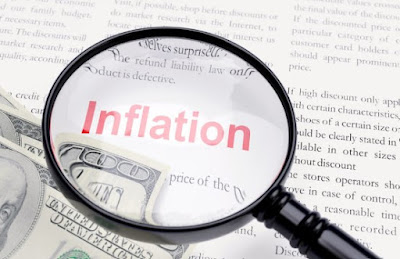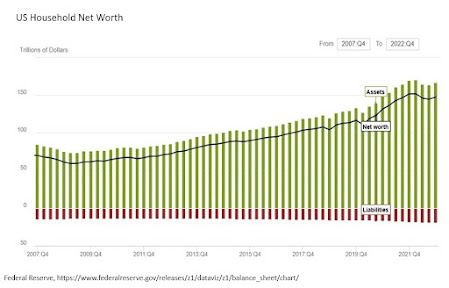A tumultuous start of the year saw the US dollar turn in a mixed performance. Emerging market currencies and the dollar-bloc softened. Sterling was in this camp, losing about 1.2% against the dollar. On the other hand, the euro, Swiss franc, and the yen were firmer.
Market positioning, the unwinding of short funding currencies and long risk assets, seemed to account for the disparate price action. The pace of the slide in Chinese stocks and yuan, and the continued fall in oil prices rather than monetary policy considerations per se were the key drivers.
Since the middle of December, the Dollar Index is holding an uptrend line. It is found near 98.20 on Monday and a little above 98.40 at the end of the week. Below there, support is at 97.80-98.00. Technical indicators like the RSI and MACDs are not generating strong signals. This warns of the risk of continued choppy though broadly sideways activity.
The euro is the biggest component of the US Dollar Index. It ought not to be surprising that the euro is holding a similar downtrend from the mid-December high. It was tested and held in the second half of last week. The trendline is found near $1.0940 on Monday and $1.0910 on January 15. Although the edges have been frayed, the bulk of the active since the ECB met in early December has been in the $1.08-$1.0 trading range. After testing the downside, and completing the 61.8% retracement of the post-ECB rally (~$1.0730), technically, the euro looks poised to test the upper end of the range in the days ahead.
The dollar's decline against the yen may not be over, though the risk increases that Japanese officials object to further yen strength. The break of JPY120 at the start of the week and then the break of JPY118 in the second half of the week has inflicted serious technical damage. Even with the stabilization of China, a strong US jobs report, and the firming of US rates, the dollar could not sustain the upticks. A break of JPY117.30 would bring the spike low (~JPY116.20) from August back into view. The dollar posted its lowest close since last February. A move above JPY119.00-JPY119.30 would begin to repair the damage.
Sterling shed more than 4.5 cents since the December 28 high near $1.4970. Sterling took out last year's low, reaching the lowest level since early 2010, just above $1.45. That early 2010 low was near $1.4250, and that is the next objective. Sterling posted an outside down session before the weekend, illustrating its inability to sustain even a modest uptick. Technical indicators give little reason to pick a bottom yet.
Cross rate adjustments amid and fading confidence that the Bank of England will raise rates before late in the year at the earliest took a toll. The December 2016 short-sterling futures contract closed the week at new record highs ( which implies low rates for longer). Also adding to the pressure on sterling was the push in the euro through GBP0.7500, violating a downtrend line from 2013, and possible neckline of a head and shoulders bottom. The measuring objective is near GBP0.8000.
The Canadian dollar fell each day last week. The US dollar reached CAD1.4170. Technical indicators warn against picked a top for the US dollar. The one note of caution comes from the Bollinger Band. The US dollar closed above the upper Bollinger Band (~CAD1.4135). The risks of a rate cut by the Bank of Canada is increasing. The implied yield of the June Banker Acceptance futures contract has fallen about 20 bp over the past month. Our next target for the US dollar is near CAD1.4320, and our H1 target is CAD1.45.
The Australian dollar's 4.2% decline gives it the dubious honor of being the weakest of the major currencies in the first week of 2016. A return to the multi-year lows set last September near $0.6900 is the next important target. A break of there could spur another cent drop. Like the Canadian dollar, the caveat is that the sharpness of the recent move has left the Aussie below its lower Bollinger Ban on a closing basis for two sessions at the end of last week.
Oil prices continue to trade heavily. Technical indicators give little reason to think that a significant low is at hand. Some near-term consolidation is possible, but resistance is seen in the $34.60-$35.35 area. Many observers are to be looking at sub-$30 levels.
The drop in oil prices, and arguably, safe haven, demand more than offset the impact of the stronger than expected employment data on US 10-year Treasury note. The pre-weekend high in the March futures contract (127-16) was within a single tick of the 61.8% retracement of the decline since early October. That roughly corresponds to a 2.11% yield in the cash market. Still, technical indicators warn of near-term risk of further gains (lower yields). A move below 2.10% will bring the 2.00% back into view.
The S&P 500 fell about 4.75% in the first week of the new year. It finished the week below the lower Bollinger Band. It happened several times last year. Sometimes it did so for two consecutive sessions but consistently presented a buying opportunity. That said, other technical indicators, and the uncertainty over impulses from China and the kick-off of the US earnings season may keep investors caution.
The gap lower opening to start the year's trading is an ominous technical signal. The gap is found between 2038.20 and roughly 2043.60. If this is a normal or common gap, it should be filled shortly. If it is a measuring gap, which typically are found around the midpoint of a move, it has easily filled its objective. It would suggest a recovery is likely. However, if it is a breakaway gap, it is a particularly bearish development and warns of additional losses.
Tags: Bank of Canada,dollar,Dollar Index








































